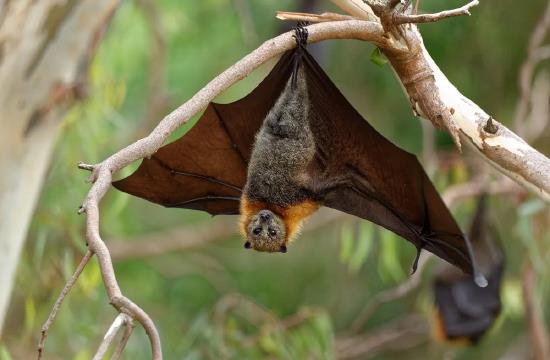The two Nipah Virus victims are the initial victim's two family members, aged nine and 24, who are currently undergoing medical care.
Regarding this, Kerala Health Minister Veena George convened a high-level meeting to assess the situation in Kozhikode. Union Health Minister Mansukh Mandaviya dispatched a team of experts to the state.
Is Nipah Virus as Contagious as COVID-19?
Despite having bats as its common source, the Nipah virus poses a different and perhaps more dangerous threat to human health than COVID-19. Nipah infections can be brutally fatal taking the lives of up to 75% of people infected, in contrast to COVID-19's moderate 1-2% fatality rate.
Nipah stands out, nonetheless, for its moderate spread. In contrast to COVID-19's lightning-fast spread and recent flu epidemics, Nipah tends to spread more slowly, providing us enough time to react.
Dr. E. Sreekumar, the director of the Institute of Advanced Virology-Thiruvananthapuram, underscores that Nipah's historical behavior suggests it won't race through populations like these highly infectious diseases.
Indeed, according to the World Health Organization (WHO), Nipah's fatality rate ranges from 40% to 75%, making it substantially deadlier than COVID-19, which has a fatality rate of roughly 2%. While both viruses are transmitted by bats, Nipah stands out for its distinct and dangerous characteristics.
The Beginning of Nipah Virus: What You Need to Know
Nipah virus (NiV) is a zoonotic disease that transfers from animals to humans, typically through infected animals or contaminated food. It can also spread directly from person to person through close contact.
The virus first appeared in 1999 during a destructive outbreak in Malaysia and Singapore, impacting both pigs and humans.
This outbreak resulted in approximately 300 human infections, over 100 deaths, and significant economic losses as a result of the killing of over 1 million pigs to contain the outbreak.
Unraveling the stages of symptoms of Nipah:
Infected persons initially experience symptoms such as:
•fever and headaches
•Myalgia (muscle pain)
•Vomiting
•sore throat
If the infection worsens, the following symptoms may appear:
•Dizziness
•Drowsiness
•Changes in consciousness
•Neurological symptoms of acute encephalitis
However, in some circumstances, Nipah virus infection may result in:
•Acute pulmonary infection
•Seizures
•Encephalitis with lethal consequences
Some Nipah virus patients may suffer the following symptoms:
•Pneumonia
•Severe respiratory issues, including acute respiratory distress, encephalitis
•Seizures progressing to coma in 24 to 48 hours
How to diagnose Nipah?
Early diagnosis is challenging due to nonspecific initial symptoms, but it's crucial for survival, transmission prevention, and outbreak management.
Early-stage diagnosis involves RT-PCR testing of blood, urine, cerebrospinal fluid, and throat/nasal swabs, while ELISA detects antibodies later in the illness and post-recovery and is crucial for survival and outbreak control despite non-specific symptoms.
Nipah Virus Preventive Measures:
In Bangladesh, Malaysia, India, and Singapore, places where Nipah virus (NiV) outbreaks have occurred, people should:
•Practice handwashing regularly with soap and water.
•Avoid contact with sick bats or pigs.
•Avoid areas where bats are known to roost.
•Avoid bat-contaminated food and drinks like palm sap and raw fruit.
•Avoid contact with the blood or bodily fluids of anyone who is known to be NiV-infected.
Apart from individual precautions, broader prevention efforts include:
•Increase surveillance in affected areas
•Study fruit bat habitats for virus transmission insights.
•Evaluate new methods to reduce virus spread in bat populations.
•Improve early virus detection in communities and livestock.
•Improve healthcare infection control.
